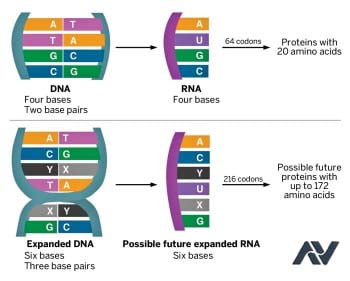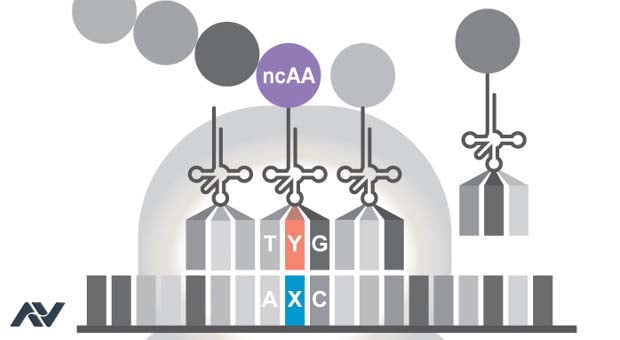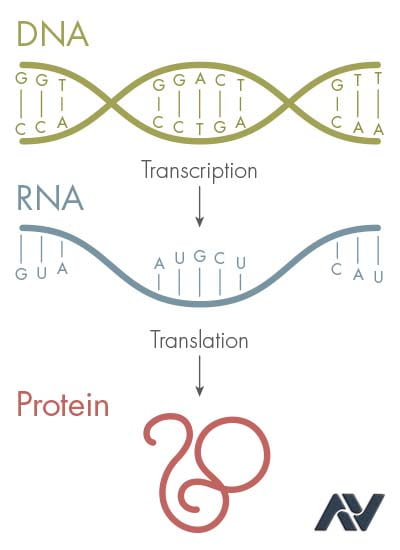What Is Genetic Alphabet?
Our genetic code is stored in DNA in an elegant double helix form. But some people argue that this is the pride that it is the elegance. “Many things are wrong in DNA as molecules,” said Steven Benner, an organic chemist from the Foundation of Applied Molecular Evolution in Florida. About 30 years ago, Benar took out superior versions of both DNA and its chemical cousin RNA, adding new letters and other additions, which would expand their exposure to chemical verbs. They thought why these reforms did not happen in living beings. Nature has written the entire language of life using only four chemical characters: G, C, A and T. Did our genetic code compromise on these four nucleotides for one reason? Or was this system one of the many possibilities, which was chosen by simple opportunity? Perhaps expanding the code can make it better. From the beginning of time, all living things include 4 letters in the genetic alphabet. Now, scientists have discovered a method to expand the genetic code to store and use orders of magnitude more than ever before. Cellular instructions for deoxyribonucleic acid (DNA) proteins are Small machines of your cells that function as important. DNA normally has 4 nucleotides (A, T, G, and C) in the form of “letters” in the genetic alphabet. Arranging them in 3-letter “words” create codes for amino acids, building blocks to make proteins. In 2014, scientists reproduced the bacteria to include 2 of the cells of the cell’s own DNA-generating machinery and 2 to include nucleotides (X and Y). However, those nucleotides cannot be used to code for new amino acids, so they have been functionally disabled. Now, those scientists have made their new nucleotide active.

Genetic Alphabets Until Now
Team E. In coli bacteria successfully used their new genetic code to include novel amino acids in a special protein called green fluorescent protein (GFP). This is the first time when scientists have made proteins with the extended genetic code. The traditional 4-letter code offers 64 potential 3-letter terms , yet only 20 are amino acids, so most amino acids contain many words in the form of code. With an extended 6-letter code, potentially 212 possible 3-letter words are conforming to 172 amino acids 8.5% more! Of course, this success can be done to make synthetic biology much higher than the brightness in dark E. coli. Such an incredible feat can be used to create new drugs, materials and even life forms! Benner’s initial efforts failed to synthesize new chemical papers. But with every false start, his team learned more about making a good nucleotide and gain a better understanding of exact molecular details that work on DNA and RNA. The efforts of the researchers progressed gradually, as they had to design new tools to manipulate the extended alphabet made by them. “We have had to rebuild, for our artificially designed DNA, it took 4 billion years for all the natural DNA development of molecular biology,” said Benner. Now, after decades of work, Benner’s team has synthesized artificially enhanced DNA which works like ordinary DNA if not better.

Introducing New Genetic Alphabet
In the ACS meeting, a pair of research groups told that they now have synthetic nucleotides, which can be included in DNA and can be copied completely by enzymes that mimic the natural DNA. These additions of the genetic alphabet are already being able to write researchers to write new chemical functions in DNA, which can help in entering a wide range of biotechnological advances. And that is an important step to make the way to make semi-living life forms, first written in the new type of genetic code, which is known to live ever. In two letters published in the journal American Chemical Society last month, researchers have shown that two synthetic nucleotides named P and Z are basically fit in the helical structure of DNA while maintaining the natural shape of the DNA. In addition, the DNA sequences involving these letters can grow like traditional DNA, which is the first for an extended genetic alphabet. New nucleotides also perform better than their natural counterparts. When challenged to develop a segment that selectively binds cancer cells, then DNA sequences using P and Z were better than those without those people. “When you compare the four-nucleotide and six-nucleotide alphabet, it seems that the six-nucleotide version has won,” Andrew Ellington, a biological chemist from the University of Texas, Austin who was not involved in the study , he said. The banners have lofty targets for their synthetic molecules. They want to create an alternative genetic system in which proteins form complexly curved molecules that function as necessary biological functions. Perhaps, instead of our standard three-component system of DNA, RNA and protein, banner is proposed, life on other planets has grown with just two.

Use Of Genetic Alphabet In DNA
The work of banners and other researchers suggests that in a large alphabet there is the ability to increase DNA work. So why did nature not expand its alphabet to work on it in 4 billion years? This can be because there are potential disadvantages of a large exhibit list. Ellington said that some structures made possible by the larger alphabet could be of poor quality, Ellington said. The goal of the banner is to search the chemical space completely so that their discoveries can be used to make new and improved versions of both DNA and RNA. He wants to improve the DNA to store the information and improves the RNA on the catalyst reactions. They did not directly show that P-Z base pairs do this. But in both layers, RNA has the ability to help in more complex structures, which in turn can make the protein a better catalyst. P is the place to add a “functional group”, a molecular structure that helps in folding and is usually found in the protein. And Z has a nitro group, which can help in molecular bondage. What if the more efficient protein can be spread directly by creating new DNA and in some other way? DNA and RNA can transmit information in both directions. Then a useful RNA mutation can be converted into the theoretically beneficial DNA. Thus, adaptation may change direction in the genetic code. The banner predicts that a two-biopolymer system will grow faster than our own three-biopolymer system. If so, then it can be an implication for life on distant planets. “If we find life somewhere else,” he said, “it will likely be a two-biopolymer system.”

New Genetic Alphabets Uses
So there are only 4 simple pieces in our genetic code, right? Cytosine, guanine, adenine, and thymine, c, g, a and t. Well, no more people, no more, no more Now there are six. When you actually think about it, then try to make a whole complex and all the crazy stuff that accompany us with only 4 simple pieces is not very efficient. For proteins, our DNA codes are made of amino acids themselves, of which only 20 are Is not he crazy? Every living thing is carried out only by different combinations of 20 basic building blocks, which are just coded with four, even more, the basic building blocks. So it is safe to say that the scientists have long been dreaming about the expansion of that toolkit. This is right. We have upgraded. These ‘unnatural’ additions of genetic code have such names and this is to make things easier for those we call X and Y. And this class of synthetic DNA base pairs is called X-Nucleic Acid or XNA. Biochemists first started trying to add these new base pairs to DNA in the 1980s, which you can imagine, this is not easy. Base pair bonding in natural DNA is highly accurate A always bonds with G with T and C, but what we have added, they are hard to correct. It’s easy for newcomers to do this wrong. This is because hydrogen bonds that hold both sides of DNA helix together are very weak. And when they are sufficient for natural goods, then the artificially introduced base pair has to be somewhat strong by keeping it together.

How New Genetic Alphabet Changed Nature
A team has solved the problem of bonding by linking the new base pair together because they are both hydrophobic so that they can effectively line up the bond. Others have just tried to strengthen the hydrogen bond by manipulating the structure of the unnatural bases. But this is actually the first hurdle. Once you get new support pairs to stay together, you have to make sure that they do not disrupt the rest of the DNA and make it chaotic. And then, whatever organisms you are getting, they really have to add them to accept them and ask them to produce these new bases. Looks like a big headache Nature is fixing itself, a master technician with all its grand cellular machinery, why do we want to mess with it? OK, because it’s worth it. We already have J. Genetically engineered organisms like coli produce the desired chemical products for us because their genome is easy to infiltrate and they reproduce so fast that you can make industrial quantities of what you want insulin, for example for. But, as we discussed, we are working with only 20 amino acids to make everything. Adding synthetic base pairs may make possible for organisms to be able to make proteins from more unusual materials … such as synthetic form amino acids produced.

All About New Genetic Alphabets
Maybe, metal-binding ones that are conductive or magnetic, create bio-materials that can be used in electronics! Okay, okay, but are not we going here in the mutant superhero area? It is easy to apply that leap, but we are not there. Because these materials are all added to the base and any unnatural amino acids are both synthetic, the base pairs will code to use those organisms which are not clearly found in nature. To be able to use these materials to the scientists, scientists have to provide these materials … and in most cases, even for survival. If there is no material to make these synthetic base pairs in the modified organism, then they simply die. They can not run badminton, Jurassic Park style, even if they wanted. In fact, we will use these new capabilities to produce new catalysts, which are used to improve and speed up chemical experiments. And it can fundamentally turn our capacity into engineers and produce more effective medicines on a large scale. With new DNA and new amino acid building blocks, we control what levels of protein are in detail which we have never thought of before. It seems that we are trying to sew shoes together, but now we have a factory to make the sophisticated shoe. We have to find out just the layout of the place, and the high technology security system. and who knows? It may be that what we have to do to get into this area can help us understand the deepest mysteries of DNA as how it all came together at the beginning of everything to make a life.